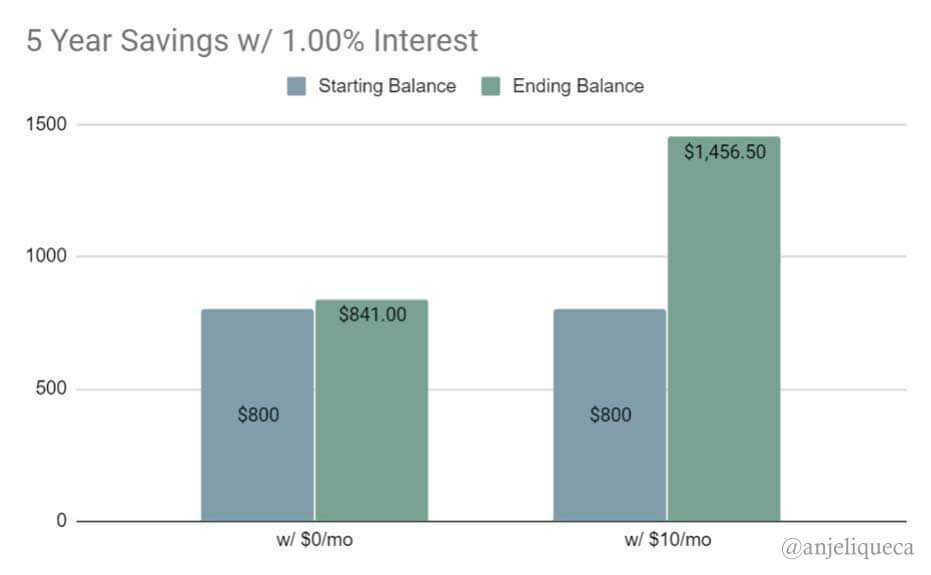This post contains affiliate links. For more information, view my disclosure policy here.
No, you don’t need a budget to manage your money well.
While I love a good spreadsheet to track my earning, saving, and spending habits meticulously, my basic money management advice does not include budgeting. I find that when you’re young, or turning around bad spending habits, starting with a budget can actually be discouraging and unrealistic.
By following three basic principles, I have paid my way through private university and—two years after graduation—I am living debt free.
In this three part series, I’ll walk you through the money management principles that helped set me up for financial freedom by 25.
No matter your age, I believe anyone can start taking control of their money—without touching a budget.
In full transparency though, I learned how to manage my money young. Before I turned eight, my mom was already teaching me the basics. Counting coins, organizing receipts, balancing a checkbook—now, that’s how I learned math. If math isn’t your cup of tea, don’t worry, my first money tip is less about numbers and more about your mindset.
However, I’m not here to give you get-rich-quick tips. These money wellness tips require effort and patience. If you have it in you, let’s get straight to it!
Basic Money Management Tip #1: Start with a savings first mindset.
Have you ever written a paper, forgot to save during the writing process, and then the power goes out?
Making money and not saving, in its simplest form, is like not saving digital homework. If you wanna play hard, you gotta save first. Only working hard isn’t gonna cut it.
My brother and I didn’t grow up with a regular allowance, but our single mom taught us to work hard and save. Whenever we would go grocery shopping or to the laundromat, my mom would give us the change; sometimes she’d throw in the small bills too.
By having a savings first mindset, that loose change became $300 I used to open my first bank account. Just a month ago, I deposited over $800 in quarters, dimes, and nickels. That $800 is now sitting in a savings account making me passive income. It’s not a lot, but it adds up.
The charts below illustrate how much you can save in five years based on variable annual interest rates, starting balances, and monthly deposits.



If you don’t know where to start with managing your money, save first.
Here are 4 simple ways you can start saving today:
After paying all your fixed expenses, like rent, utilities, and other living costs, pay your savings account—or piggy bank—first.
Start with $100, $50, or 50¢. It doesn’t matter how much you’re saving when you first start saving. We’re building a habit here, the details can follow later.
To stay on track of my savings in college, I used financial challenges, like the 52 Week Challenge or the $5 Challenge. These types of challenges are fun, measurable, and low-effort ways to build a savings habit.
My tip when doing savings challenges, though, is to go with a modification, but consistency mindset. If you miss a few weeks in the 52 Week Challenge, deposit a larger lump sum next month. If you want to save faster, put away ten dollar bills too. At the end of day, the goal is to keep saving.
Make your savings difficult to access.
Use separate banks for your checking and savings accounts. If you can’t see your savings, you’re less likely to take money out.
Don’t have a bank account? Same principle: put that piggy bank somewhere out of sight.
I like using a two container method for cash savings for two reasons: 1) a small container fills up faster which is encouraging, and 2) the small container can also be placed by your every day carry items as a reminder to save, while the bigger container is hidden away.
Whenever you spend money, look for ways to save a couple of bucks.
I use coupons, cash back apps like Ibotta or Rakuten, and I’m always on the hunt for a sale or deal. (Disclaimer: The links above are referral links. If you sign up, I get a bit of cash back at no cost to you.)
If you want something that is not a necessity, save for it and buy it later.
By waiting to purchase, you create enough distance from the object to question whether or not you really need or want it. If you find yourself constantly thinking about whatever item you wanted to buy weeks later, then you know it’s not just another impulse buy.
Plus, that time spent saving is also time you can spend looking for a cheaper price or waiting for a deal. Or, you might even find something you like better later. Either way, by saving first, you lessen the likelihood of buyer’s remorse.
Talking about money and financial wellness isn’t always easy, but it’s important.
While I do agree that money doesn’t buy happiness, money does buy the stability and security to facilitate happiness. If you’re not worrying about how you are going to feed or house yourself, you have a whole lot more energy to entertain the things that make you smile.
So, what are you saving towards? I’d love to hear from you!
Drop a comment, send your thoughts privately to my inbox, or subscribe for more tips and tools to cultivate your wellness habits.
See you next time for basic money management tip #2. In the meantime, here’s an article on some financial challenges and advice to get you started. The decade is coming to a close, but now is always a great time to start saving!
Disclaimer: I am not a licensed financial professional. Make money moves at your own risk.



